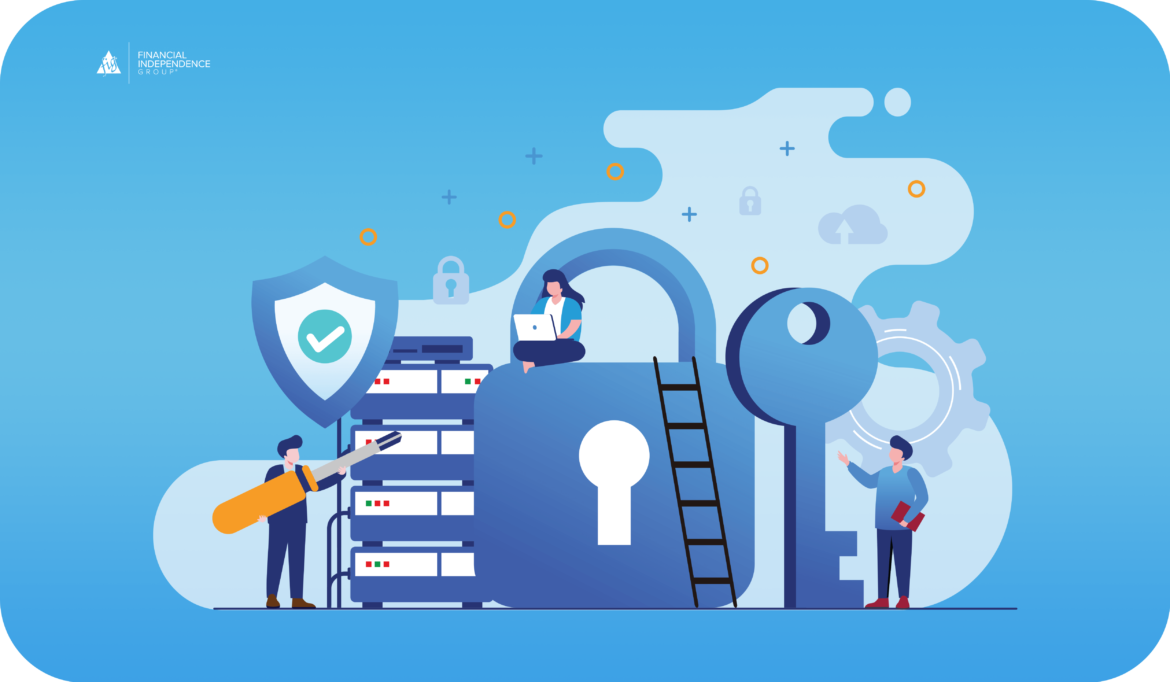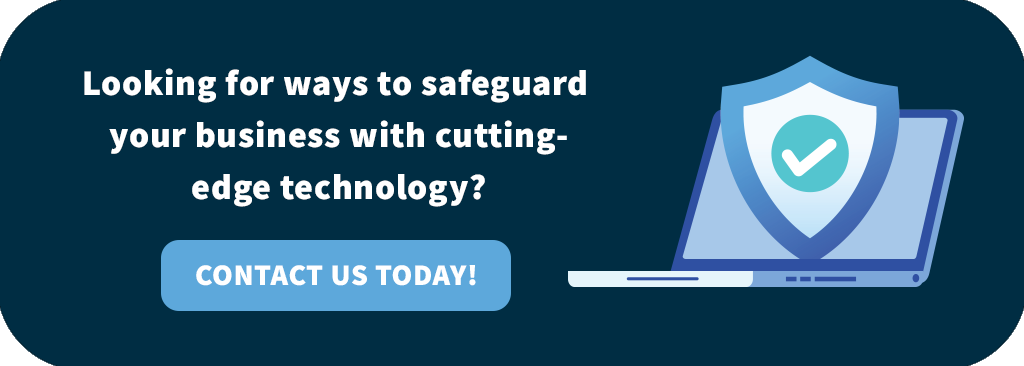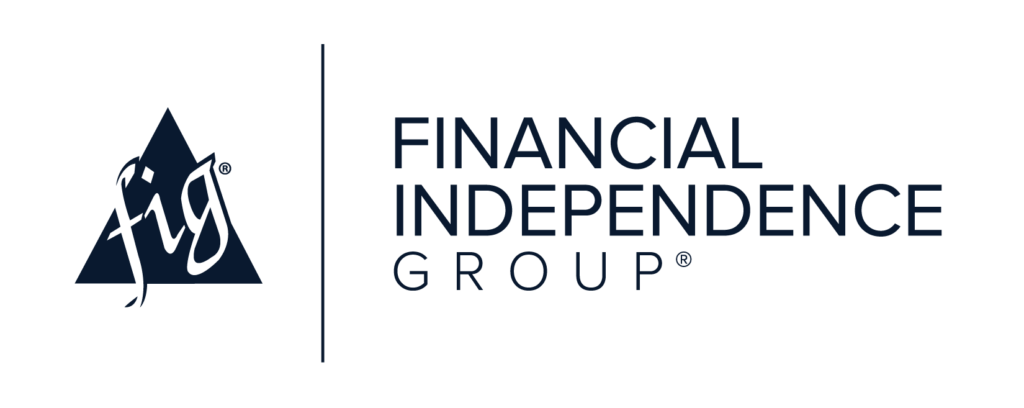Amazon. Equifax. T-mobile. Meta. What do all these big-name corporations have in common?
They’ve all fallen victim to data breaches that cost millions of dollars.
If it can happen to the largest companies in the world, a cyber-related incident can happen to anyone. Cybersecurity measures have long been vital to a business’s success, but now, with generative AI, cybercriminals have raised the bar. Attacks are getting smarter, faster, and more costly.
Even AI itself, ChatGPT, saw a data breach in March of 2023, compromising some individuals’ first and last names, email addresses, and the last four digits of credit card numbers.
Cybersecurity is Critical for Financial Professionals
It comes as no surprise that financial institutions remain the top target for cybercriminals. From financial data to personal medical history, financial professionals guard uniquely valuable client information that could cause severe damage if it falls into the wrong hands.
Clients trust financial professionals to safeguard their private information from lurking threats. So, when firms experience a data breach, they incur more than just steep fines. They also lose the trust of their customers, which can be even more financially detrimental, especially to a small business.
To combat data breaches, it’s important to understand how they happen in the first place. Let’s look at the top cyber threats businesses face today and how AI has moved the goalposts.
How AI is Used for Cyber Attacks
Phishing
Phishing has always been a top cyber concern for businesses. When cybercriminals pose as a trusted contact, they can entice someone to click a harmful link or forfeit valuable information. In the past, phishing emails were easy to spot with their grammatical errors and misspelled words. Now, with the help of AI, phishing emails look that much more convincing, even thwarting companies’ high-level executives.
Due to this, business email compromise has been on the rise. For example, if a cybercriminal can steal enough information to be able to pose as a familiar vendor to a company, they can send an email invoice to the senior executive at that company. This routine email looks legitimate and can easily fly under the radar.
In fact, 90% of corporate security breaches happen because of phishing. So, staying wary of the emails you receive and providing proper team-member training is more vital now than ever.
Keystroke Monitoring Malware
Did you know AI can now listen and replicate your keystrokes to steal your password with 95% accuracy? Since COVID-19 transformed how we do business, remote work has required us to rethink cybersecurity in several ways, and this is just the latest concern. AI can now pick up a password from keystrokes over a video call, even without a screen share.
So, the next time you’re on a Zoom call typing sensitive information, don’t forget to turn off your microphone.
Weak Passwords
In the past, cybercriminals would use programs to try different combinations of dictionary words or common phrases until, through enough trial and error, they cracked a weak password.
Now, an AI-powered password-cracking tool can retrieve a commonly used password in minutes. Passphrases, including special characters and a mix of capital/lowercase letters, are the best way to combat AI-powered tools.
If Hackers are Using AI, So Can We
Good news: cybercriminals aren’t the only ones using AI to work smarter, not harder. Our lines of defense have also improved. With machine learning algorithms, AI can analyze vast amounts of data to detect patterns, identify threats, and make pivotal decisions.
While cyberattacks are somewhat inevitable, you can still take preventative measures to ward off potential threats. Here’s a checklist of conventional and AI-improved cybersecurity procedures to consider today.
Related: Fintech Security Tips to Stay Secure
Cybersecurity Checklist: 7 Essential Tips
#1: Stay Informed
As cybercriminals’ attempts get more sophisticated and harder to identify, a business owner needs to stay informed on the newest threats. Subscribing to cyber news outlets is a great way to be alerted of cybercriminals’ new AI tactics so you can notify your staff and adjust your defenses accordingly.
Speaking of staff, you probably already deploy some cybersecurity best practice training for your employees. However, you’ll want to ensure your current training isn’t outdated and changes frequently to address hackers’ newest tactics.
By understanding the common red flags to watch for, your team members can recognize and respond to advanced phishing attempts and social engineering, reducing the risk of a data breach.
When it comes to warding off a cyberattack, knowledge is power.
#2: Remote Work Safety
During the initial rise of remote work, we learned the hard way that cybercriminals target vulnerable Wi-Fi networks. In fact, during the pandemic, we saw a 238% uptick in cyberattacks.
Setting up guidelines and adding education for remote work to your regular training can ensure that everyone at your firm practices cyber safety, no matter where they log on. Training should include video-meeting safety, like muting your microphone when typing important information and being aware of open tabs and documents when screen sharing.
Set up virtual private networks for accessing company systems. Some wireless data privacy systems utilize AI to strengthen data encryption by creating complex algorithms that are harder to crack. Experts also recommend using a cloud-based file-sharing program protected with security requirements.
#3: Secure Passphrase Practices
It’s a no-brainer, but we can’t talk about cybersecurity without mentioning password safety. Hopefully, by now, you know better than to use your pet’s name with an exclamation point as your password.
Still, trying to remember a different 16-character sequence for each of your logins can be frustrating. As tempting as it could be to jot all your complex passphrases down in your smartphone’s notes app, better programs are available. Consider using a password management tool to keep your company’s collection of passphrases secure in a digital vault.
Multi-factor authentication (MFA) is another defense against unauthorized access, especially for small businesses, as it adds an extra layer of protection without significant costs. This way, even if your password is compromised, there’s a secondary verification step to keep out intruders, usually a code through a mobile app or text message. Even secure wireless networks should be MFA-protected.
Related: 10 Cybersecurity Tips for Small Business Owners
#4: Anti-Virus & Firewalls
In the age of AI-driven cyberattacks, anti-virus software has also evolved to better protect our systems from hackers. Modern anti-virus solutions employ AI and machine learning to identify known and emerging malware, neutralizing it on the spot. Some anti-virus suites even update automatically.
Firewalls serve as the frontline defense against AI-driven attacks, so it makes sense that modern software is fighting fire with fire. Firewalls can also now leverage AI for enhanced threat detection, enabling real-time identification of suspicious activity. Strong firewalls and comprehensive anti-virus suites can protect even your remote workers from dangerous invaders.
#5: Regular Software Updates
Sitting on outdated software or unpatched vulnerabilities is the easiest way to put yourself at high risk for a cyberattack. Frequently updating your systems, including anti-virus software and firewalls, can ensure that your level of protection is strong against the latest emerging threats.
The simple act of initiating a regular update is often the difference between a well-protected system and an easy target. So, the next time your computer recommends a new update, avoid clicking that “snooze” button.
#6: Regular System Back-Ups
Unfortunately, a data breach can still happen even if you take all the necessary cautionary steps. That’s why resiliency is just as important as prevention.
For instance, AI-driven cyberattacks can often result in data loss. A consistent backup schedule lets you know your client’s important data can be restored. This safety net enables your business to maintain essential functionality, even amid an unfortunate data breach.
In addition, you should create a plan with actionable steps to take if a cyber-related incident occurs at your firm. When you and your staff know the protocols, everyone can swiftly act and recover if disaster strikes.
#7: Cyber Insurance
If we’ve learned anything from the data breaches of large corporations, it’s that a cyber-related attack can be expensive.
Cyber insurance is another important step towards resiliency and should be top of mind for financial professionals who don’t already have it in place. As your business grows, consider the level of sensitive data you’re holding and frequently revisit your coverage.
Related: 5 Reasons to Use a Wealth Management Fintech Platform
SEC Cybersecurity Rules for Financial Professionals
Implement Written Policies
It’s always been a good idea for business owners to have written policies in place for cybersecurity, but now it’s now a required practice for financial professionals by the US Securities and Exchange Commission (SEC).
Consider what specific cybersecurity risks could affect your clients or investors and design policies and procedures to address these dangers directly. The plans should account for all areas of your business and be openly communicated to all staff.
Report Cybersecurity Incidents
The SEC requires financial professionals to report any significant cybersecurity incident within 48 hours of discovering the event. These reports are documented by filling out Form ADV-C before sending it back to the Commission.
When creating your action plan for a cyberattack, consider an incident reporting process that includes an ADV-C form template; that way, your team can quickly report these cases to the SEC even amid chaotic data breach. File this form and any other records that demonstrate your compliance somewhere that’s easy to access in the future if needed.
Review Cybersecurity Procedures Annually
Financial professionals are now required to conduct annual reviews of their cybersecurity policies and procedures. In this detailed report, you’ll assess how well your firm is addressing cybersecurity risks with the current systems and outline any changes made. If you have any documented accounts of cyber-related incidents from that year, you’ll need to include them in the report for the board of directors to review.
To find more information about these regulations and others, click here to read the specifics on SEC.gov.
Bottom Line
Keeping clients’ data secure is one of the most important responsibilities a financial professional has. There’s too much at stake not to be proactive and vigilant in protecting your business from AI-enhanced threats.
You don’t have to be an IT wizard to implement proper cybersecurity measures. Partnering with a team of experts can equip you with the technology, information, and access to the protection you need to streamline your business growth and enhance client trust.
To learn more about FIG’s cybersecurity solutions or to explore cyber insurance options, contact our team today.


